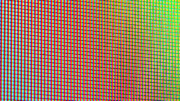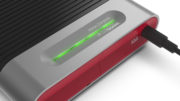Yes, we get it, it’s frustrating. In some cases we publish specs for our cellular boosters that include an idea of range (such as “up to 5,000 square feet”) but in most cases you have to content yourself with a dB reading and to an average person, that’s not a very helpful measurement. Wouldn’t it be nice if you could say, “I have a 2,000 square foot home, this booster will cover it?”
Unfortunately there are so many variables that it’s impossible to promise what the range of the booster will be once it gets to your location. We really try very hard to find the best booster for you using some proprietary formulas, but it’s still a little bit of a guessing game depending on the details of your particular installation. When we do professional installs, we go out to the site with a signal meter and we can tell based on that how much coverage we’ll need to provide. With an internet sale, that’s a little hard to do.
Here are some factors we consider when we’re trying to recommend a cell booster to you:
Your home’s age
This can be the biggest determining factor. Very old homes were painted with lead-based paint that blocks all radio signals. Even though your home probably doesn’t have lead paint anymore, it’s possible that lead seeped into the plaster and while it’s not dangerous to you, it’s still in there. Older homes have absorbed tobacco smoke, smoke from fireplaces, and if they’re really old, oils and residues from all sorts of things.
The kind of construction used in your home
Older homes were framed in wood but often used flex conduit for electrical lines. This flex conduit blocks electrical signals. On the other hand, many newer homes use metal studs that can have the same effect. Homes with stucco walls often block signals because of the metal mesh used to let the stucco take hold. Metal siding blocks signals, but vinyl siding does not. Modern windows have UV protection that also dampens cellular signals. It’s a lot to think about.
Placement of the booster
It’s tempting to place the booster in the corner of the house so it’s not in the way, but this actually eliminates about 75% of your booster’s ability to function, since it’s actually boosting a large area outside your home. We recommend the booster be centered in your home if possible.
The signal strength outside
Your cell booster will do a much better job if the signal outside is at least passable (two bars or more.) Otherwise, it’s usually best to use a larger antenna and put it up higher to pull in as much signal as possible
And then there’s always…
…the unexpected. In one case, a homeowner put the booster inside the open area in a desk. There was no problem with ventilation. But still, it didn’t work. There was no noticeable boost. The problem is that the desk was made of dense hardwood and had several layers of varnish. The vents were covered with decorative metal grilles that blocked the signal even more than the hardwoods did. There can also be RF interference from poorly shielded electronics or appliance, flaky electrical power, or any number of other possibilities.
In the end, that’s why we try to give you some guidelines and suggest that you tell us as much as possible about the installation so we can recommend a sufficient booster, rather than just quoting a square foot measurement. And of course, when you’re ready to get a cell booster, shop the great selection at Solid Signal!





